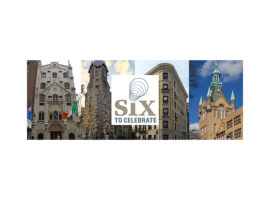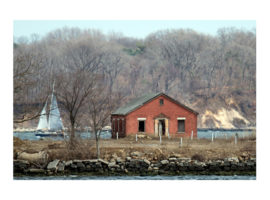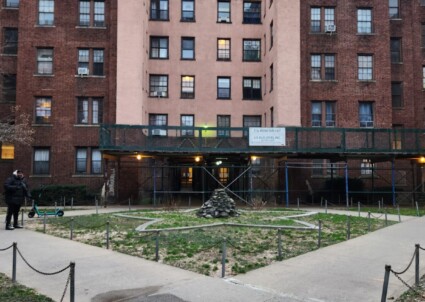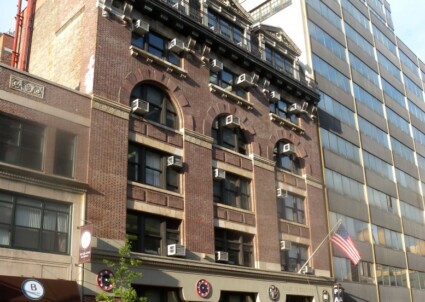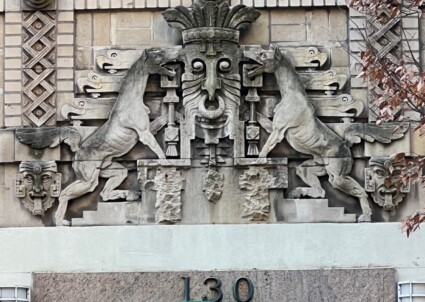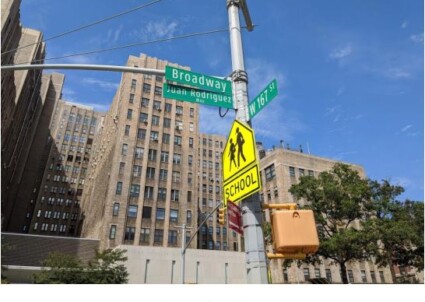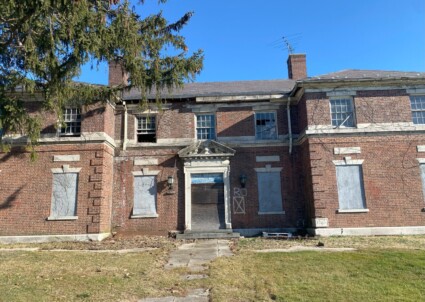Audubon Park, Manhattan
The beginnings of the community now known as Audubon Park date back to 1841, when John James Audubon purchased fourteen acres and built a large mansion along the Hudson River shortly after publishing his famous work, Birds of America. Audubon named his farm, a pastoral landscape of woods, wildlife and rocky outcroppings, “Minnie’s Land” in honor of his wife. After bringing back plant and animal specimens from his 1843 expedition to the American West, Audubon lived on this secluded estate until his death in 1851. Facing financial hardship, Audubon’s family sold the land in small portions through the 1850s and 1860s. As early as 1854, the name Audubon Park was used for an enclave of ten large homes located on the former estate. Into the 1890s, Audubon Park retained a distinct identity from that of the rest of Washington Heights, remaining relatively secluded even as improvements in the street system and the introduction of cable cars and the Ninth Avenue elevated railroad brought residential development to its borders. In 1892, the city extended its fire limits up to West 165th Street, prohibiting new wood frame construction. The first masonry structures to appear within Audubon Park were a row of 12 three-story rowhouses constructed in 1896-98 on West 158th Street.
When the Interborough Rapid Transit subway line along Broadway arrived at West 157th Street in 1904, Audubon Park was ripe for explosive growth. In 1905, the first apartment buildings in the area were built just outside Audubon Park’s boundaries at 609 West 158th Street and 3750 Broadway. However, most development occurred after the Grinnell family, which had controlled most of the former Audubon estate since the 1880s, sold its holdings to a syndicate of developers in 1908. Within a year, nine apartment buildings replaced most of the area’s winding roads and wood frame villas. From 1905 to 1932, 19 apartment houses were constructed in what is now the Audubon Park Historic District. Elegantly designed in a variety of styles and equipped with modern amenities, these buildings were marketed for upper middle-class tenants. Anchoring this neighborhood was Audubon Terrace, a unique complex of educational and cultural institutions whose construction began in 1904 and included the Church of Our Lady of Esperanza and the Hispanic Society of America. The influence of Audubon Terrace on the surrounding neighborhood is reflected in the names of some of its apartment buildings, including the Cortez, Goya, Hispania and Velazquez.
Audubon Park has served as the site of significant preservation battles throughout its history. Efforts to create a park out of the remaining undeveloped portions of the Audubon estate and to save the John James Audubon house as a museum were scuttled by the construction of a viaduct carrying Riverside Drive from 151st Street to 161st Street in 1928. With the imminent development of new apartment buildings, a local community group successfully moved the house, but it was eventually demolished despite these efforts. Fortunately, success stories can be found in the designation of the Audubon Terrace and Audubon Park Historic Districts in 1979 and 2009, respectively. Today, a group of residents working with the Riverside Oval Association is advocating for the protection of the aforementioned 12 rowhouses on West 158th Street, constructed in 1896-98.

